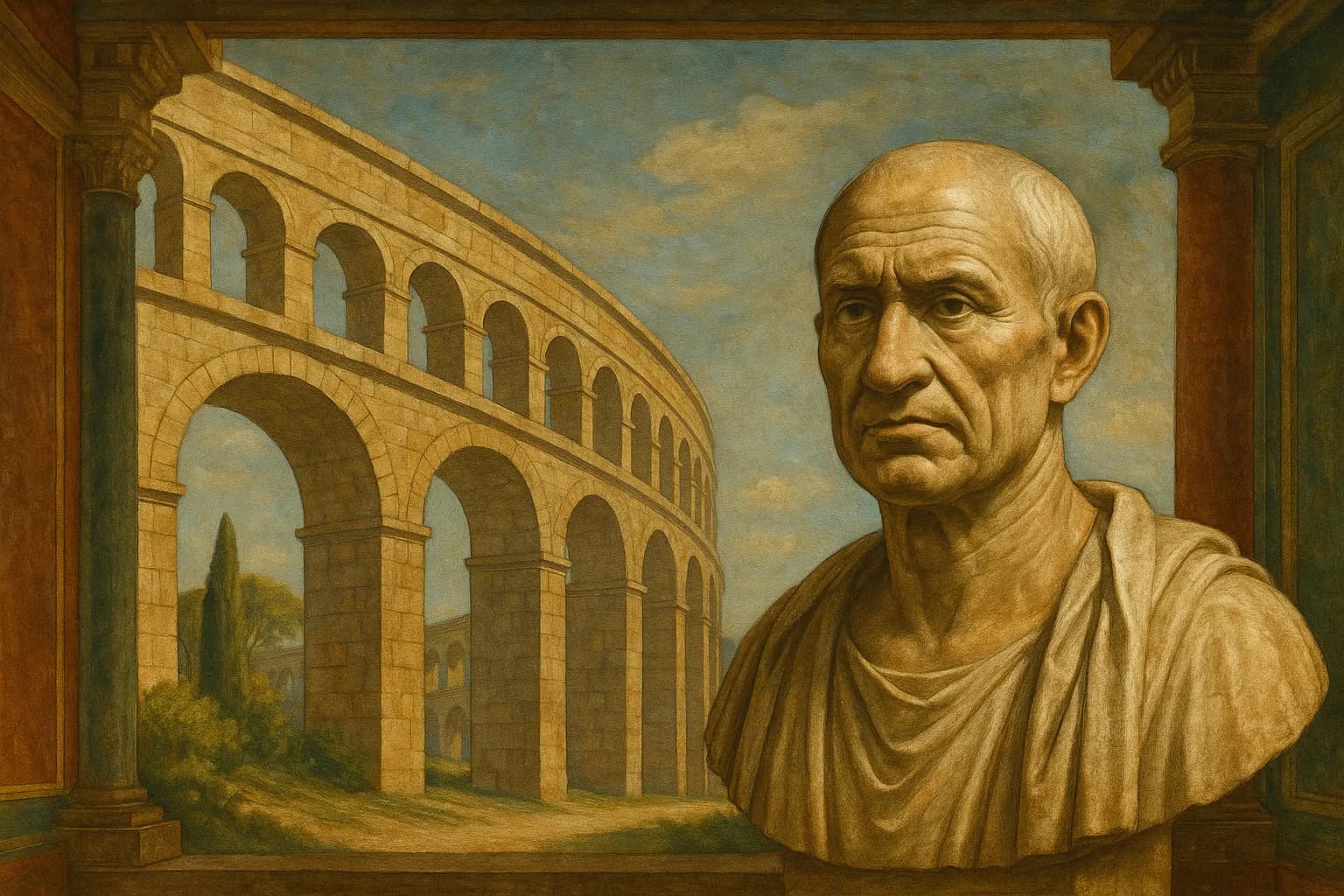Ancient Roman Art
1 min read

Period: c. 509 BCE – 476 CE (Roman Republic & Empire) Region: Roman Republic/Empire (Centered on Italy, extending across Europe, North Africa, Near East)
Overview & Key Characteristics
Ancient Roman art, spanning the Republic and the vast Empire, is known for its impressive scale, practical function, and eclectic nature. While heavily influenced by Etruscan and especially Greek traditions (particularly Hellenistic art), Romans adapted these styles for their own purposes: glorifying the state and its emperors, commemorating historical events, honoring ancestors, and decorating public and private spaces. Key Roman innovations include advances in architecture and engineering (utilizing concrete, arches, vaults, and domes to create massive interior spaces) and the development of highly realistic portraiture (verism) and detailed historical narrative reliefs. Fresco painting and intricate mosaics were widely used for decoration. Roman art often served as propaganda, reinforcing power structures and civic identity across the diverse empire.
Summary of Common Characteristics:
| Feature | Characteristic Description |
|---|---|
| Light | Architecture: Masterful manipulation of light through openings (e.g., Pantheon's oculus), coffering, and spatial sequencing. Painting/Mosaic: Often employed shading (chiaroscuro) for realism. |
| Surface/Texture | Sculpture: Highly realistic rendering of textures (skin wrinkles, hair, fabric) in portraits (verism); smooth idealization in mythological scenes. Architecture: Concrete structures faced with marble veneer, brick, stucco, or left exposed. |
| Figures | Sculpture: Blend of Greek idealism (for gods/myths) and striking veristic realism (esp. Republican portraits). Imperial portraits often mix realism with idealized propaganda. Figures in reliefs can be dynamic, crowded, historically specific. |
| Space/Depth | Architecture: Revolutionized interior space using arches, vaults, domes. Painting/Mosaic: Developed intuitive/atmospheric perspective for illusionistic depth (trompe-l'oeil walls, landscapes). Reliefs: Conveyed depth through layering and varied relief height. |
| Color Palette | Painting (Frescoes): Rich palette from mineral pigments (Pompeian reds, yellows, blues, greens, blacks). Mosaics: Extensive color range using small cubes (tesserae) of stone, glass, ceramic. Sculpture/Architecture: Originally often painted (polychromy). |
| Composition | Architecture: Emphasis on axiality, symmetry, grandeur, procession. Reliefs: Dense, narrative compositions, often arranged chronologically (e.g., spiral on Trajan's Column). Painting: Balanced scenes, often within painted architectural frames. |
| Details/Lines | Sculpture: Meticulous detail in portraits, armor, historical scenes. Painting/Mosaic: Ranged from precise realism to more impressionistic or stylized approaches depending on period and function. |
| Mood/Emotion | Varies: Grave dignity, seriousness (gravitas in veristic portraits); Imperial power and majesty; Dramatic narrative (reliefs); Leisurely or fantastical (domestic frescoes/mosaics). Practicality often valued over Greek philosophical idealism. |
| Subject Matter | Emperors, Imperial family, state ceremonies, military campaigns, historical events (narrative reliefs, arches); Ancestor portraits (verism); Roman mythology (often echoing Greek myths); Scenes of daily life, landscapes, still life (frescoes/mosaics); Public works (baths, aqueducts, basilicas, amphitheaters). |
Historical Context & Influences
Roman art reflects Rome's journey from a Republic built on civic virtue and ancestral piety to a vast, multicultural Empire ruled by powerful emperors.
- Republic (509-27 BCE): Emphasis on tradition, family lineage (gens), and realism in portraiture (verism). Expansion across Italy and the Mediterranean brought contact with Greek art.
- Empire (27 BCE - 476 CE): Imperial patronage fueled massive building projects and art used for propaganda (e.g., Augustus promoting peace and his divine connection). The Pax Romana facilitated trade, communication, and artistic diffusion. Engineering feats like roads and aqueducts unified the empire. Growing diversity and later instability influenced art styles, leading towards Late Antiquity aesthetics. Your location, Edirne (Hadrianopolis), became prominent during the Imperial era, named after Emperor Hadrian.
- Influences: Deeply indebted to Greek art, especially Hellenistic styles which Romans collected, copied, and adapted. Etruscan art provided earlier influences in temple design, terracotta sculpture, and funerary customs. Roman art, in turn, formed the bedrock for subsequent European art, heavily influencing Romanesque, Renaissance, and Neoclassical movements.
Key Artists & Their Contributions
Roman art production was largely driven by patronage (state, emperors, wealthy families) rather than the fame of individual artists. Many skilled artisans and architects were slaves or freedmen, often of Greek origin. While specific names are rare compared to Greece, the collective achievement in engineering, architecture, and specific genres like portraiture is immense. The focus shifts from the individual 'genius' artist to the patron and the function of the artwork.
Notable Works / Sites
- Architecture/Engineering: The Colosseum (Rome), Pantheon (Rome), Roman Forum, Imperial Fora (Rome), Aqueducts (Pont du Gard, France; Aqueduct of Segovia, Spain; Valens Aqueduct, Istanbul), Baths of Caracalla (Rome), Hadrian's Villa (Tivoli), Maison Carrée (Nîmes, France), Amphitheaters and Theaters across the empire (e.g., Aspendos, Turkey).
- Sculpture: Augustus of Prima Porta, Equestrian Statue of Marcus Aurelius, Ara Pacis Augustae (reliefs), Arch of Titus (reliefs), Trajan's Column (narrative relief), Arch of Constantine (reliefs, including spolia), countless veristic portrait busts, sarcophagi reliefs.
- Painting: Frescoes from Pompeii and Herculaneum (categorized into Four Styles), Fayum mummy portraits (Egypt, Roman period - encaustic on wood), Catacomb paintings (Rome, Early Christian within Roman tradition).
- Mosaics: Extensively used for floors and walls across the empire - notable examples at Villa Romana del Casale (Sicily), Antioch (Turkey), Pompeii, Ostia Antica (Italy).
Legacy and Influence
The legacy of Roman art and architecture is pervasive in Western civilization:
- Transmission: They adopted and spread Hellenistic Greek forms across their vast territory.
- Innovation: Concrete construction, arches, vaults, and domes revolutionized architecture, enabling massive, durable structures. The basilica plan influenced church architecture.
- Genres: They established realistic portraiture and detailed historical narrative relief as major artistic genres.
- Infrastructure: Roman engineering (roads, bridges, aqueducts) shaped the landscape of Europe and beyond.
- Foundation: Roman art provided the direct artistic heritage for the Middle Ages (Romanesque literally means "in the Roman manner") and was a primary source of inspiration for the Renaissance and Neoclassicism. Roman law, language, and civic ideals, often expressed visually, profoundly shaped Western culture.